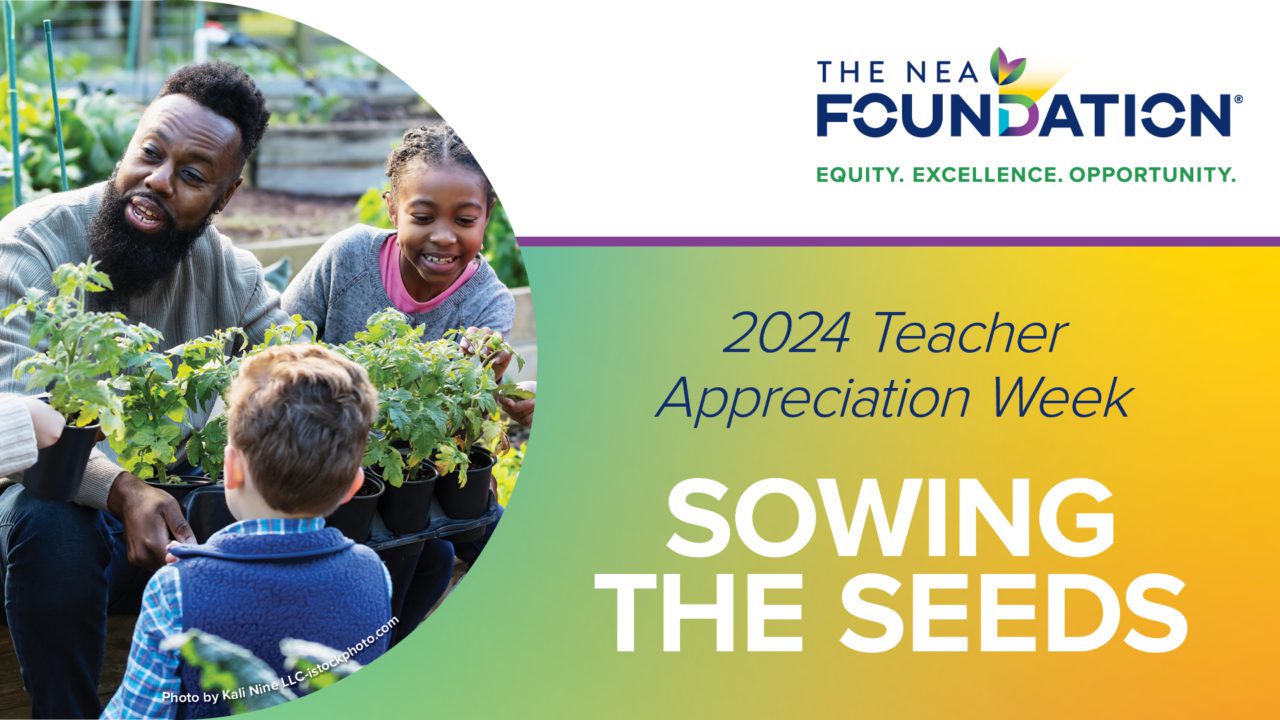The NEA Foundation Board of Directors is made up of savvy and strategic leaders from a diverse set of fields. Each member offers a unique perspective on public education, drawn from his or her own experiences and relationships within the public, private, nonprofit and government sectors. The Foundation benefits greatly from the Board’s leadership, thinking and commitment to public education.
Research stresses the importance of this hands-on learning as an important way to spark interest in critical and fast-growing STEM fields. But little about science instruction in today’s classrooms matches that ideal.
Too many districts suffer from a shortage of highly qualified science teachers. Too many schools have to contend with stretched budgets that have eliminated lab equipment and lab time. And so, too many teachers, especially those in underserved communities, are forced to resort to uninspiring “paper labs.” As a result, their students lack skills and experiences that can prepare them for STEM-related post-secondary coursework and jobs in fast-growing STEM jobs.
NEA Foundation STEM grants provide the resources for districts to build and expand their STEM programs and the professional learning for educators to lead them well. Our shared goal: giving more students access to the high-quality STEM learning they’ll need to succeed.
Program Overview
The NEA Foundation supports high quality STEM learning by increasing access to and improving the quality of STEM education in underserved communities. We invest in educator-lead and union-supported STEM programming that encourages students to incorporate STEM learning in their daily lives, academic careers, and professional endeavors.
Through past work in districts throughout the United States, the Foundation has learned that STEM education is most successful when students develop personal connections to specific STEM activities and the associated academic fields, and that both formal (courses or integrated content) and informal (after school and summer programs) opportunities can support such experiences.
Through this initiative, we are working with districts to improve student access to STEM learning by helping educators, administrators, and key partners implement systems that allow experiential learning to help improve outcomes for students.
Programs in our partnering districts will:
- Grow and scale the number of existing promising STEM practices within the district
- Increase the number of high-need students receiving a high-quality STEM education
- Emphasize cross-curricular project-based learning
- Give educators a key role in designing and implementing district-wide STEM initiatives and curriculum
- Develop partnerships with key members of the community and work with partners to expand STEM activities within and beyond the district
We have awarded $150,000 grants to two districts to increase student engagement and motivation around STEM:
- In Hamilton County, TN, the district will invest in the skills of educators through three interrelated initiatives that emphasize project-based STEM learning. These initiatives will enable a cohort of educators to act as leaders in schools that will expand the use of maker spaces.
- In Greeley, CO, educators have developed a K-12 framework for instruction, aligned to Next Generation Science Standards, to help bring coherence to the way STEM is taught within and across schools. With the support of dedicated STEM teacher leaders, they will pilot this approach in eight schools, with the goal to scale across the district. A local team of educators, principals, and district administrators designed the framework which will serve as a guide for educators seeking to develop cross content collaborative lesson development.
Why STEM?
STEM-related career opportunities are among the fastest-growing of all occupational sectors. Most of these jobs require education beyond high school, and based on current trends, the United States will fall short of demand for highly educated workers by as much as 5 million by 2020.
While minorities make up an increasing percentage of students in the United States, they continue to be underrepresented in STEM fields. By 2050, more than 40 percent of the US population will come from these underrepresented groups. To fill the gap in demand, all students, especially those from groups not often seen in STEM fields, need stronger STEM education.
Hands-on projects empower educators to develop and use proven practices to excite and interest students in STEM. These projects show students from all backgrounds that a STEM career is possible for them. They give students tools to achieve their goals.








